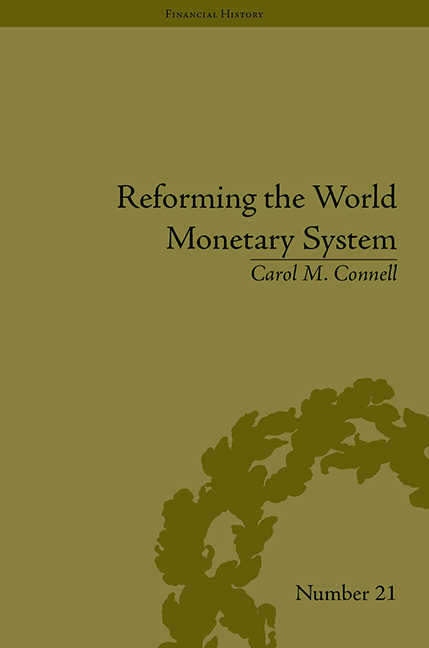Book contents
- Frontmatter
- Contents
- Acknowledgements
- List of Figures and Tables
- Introduction
- 1 A Crisis in Confidence
- 2 Fritz Machlup, his Research and Methodology
- 3 Robert Triffin and the Triffin Plan
- 4 William Fellner and the Intersection of Macro and Microeconomics
- 5 Why Economists Disagree: The Role of Framing in Consensus Building
- 6 ‘Assuring the Free World's Liquidity’ through Multiple Reserve Currencies
- 7 Milton Friedman and the Arguments for Flexible versus Fixed Exchange Rates
- 8 Collaboration with the Group of Ten
- 9 Adjustment Policies and Special Drawing Rights: Joint Meetings of Officials and Academics
- 10 From the Bellagio Group to the Bürgenstock Conferences
- 11 From the Bellagio Group and Joint Conferences of Officials and Academics to the Group of Thirty
- 12 Reassessing the Bellagio Group's Impact on International Monetary Reform
- 13 The Impact of the Bellagio Group on International Trade and Finance Scholarship from the 1960s to the Present
- Conclusions
- Notes
- Works Cited
- Index
9 - Adjustment Policies and Special Drawing Rights: Joint Meetings of Officials and Academics
- Frontmatter
- Contents
- Acknowledgements
- List of Figures and Tables
- Introduction
- 1 A Crisis in Confidence
- 2 Fritz Machlup, his Research and Methodology
- 3 Robert Triffin and the Triffin Plan
- 4 William Fellner and the Intersection of Macro and Microeconomics
- 5 Why Economists Disagree: The Role of Framing in Consensus Building
- 6 ‘Assuring the Free World's Liquidity’ through Multiple Reserve Currencies
- 7 Milton Friedman and the Arguments for Flexible versus Fixed Exchange Rates
- 8 Collaboration with the Group of Ten
- 9 Adjustment Policies and Special Drawing Rights: Joint Meetings of Officials and Academics
- 10 From the Bellagio Group to the Bürgenstock Conferences
- 11 From the Bellagio Group and Joint Conferences of Officials and Academics to the Group of Thirty
- 12 Reassessing the Bellagio Group's Impact on International Monetary Reform
- 13 The Impact of the Bellagio Group on International Trade and Finance Scholarship from the 1960s to the Present
- Conclusions
- Notes
- Works Cited
- Index
Summary
Introduction
The creation of special drawing rights (SDRs) was designed to solve the liquidity shortage that might delay balance of payments adjustment or provoke financial crises. How SDRs were distributed – to whom, how much and how often – was influenced by the ministers and bank governors of the Group of Ten, a group of mostly European officials from countries that had signed the General Arrangements to Borrow, and their deputies. The deputies of the Group of Ten met separately from the IMF in a series of eighteen conferences called the Joint Meetings of Officials and Academics (1964–77), organized by economists Fritz Machlup, Robert Triffin and William Fellner as an early social interest non-governmental organization (NGO). The conference organizers sought to provide a framework within which to manage issues where international management had become inadequate, and, increasingly, to provide a voice and identity for the European nations who were part of the Group of Ten.
While the Fritz Machlup and Robert Triffin Papers confirm the Bellagio Group's recommendation of a special reserve asset as early as 1964, the group's real work on adjustment and special drawing rights (as it came to be called) was done at the Joint Conferences of Officials and Academics from 1964 to 1977.
As discussed in Chapter 8, the Group of Ten countries had emerged as a powerful sub-group, often pursuing their own versions of projects that the IMF as a whole had in progress.
- Type
- Chapter
- Information
- Reforming the World Monetary SystemFritz Machlup and the Bellagio Group, pp. 125 - 142Publisher: Pickering & ChattoFirst published in: 2014



